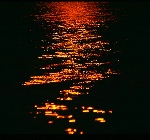Tripods are a nuisance when travelling! Sturdier models weigh tons and if you are travelling with a group your family or your partner, setting it up numerous times will not make you very popular.
On the other hand, good night pictures are virtually impossible without a tripod and hand-holding wildlife photographs (moving subject, strong tele lens...) is also a challenge (image stabilisers might help here).
I tend to hate my tripod when I have it with me but really miss it when I Left it at home. Sort of a love-hate relationship.
There are alternatives to heavy tripods however. The simplest one is the bean bag supporting your camera on walls or other elevated objects. Then, there are small pocket tripods, admittedly more suited for small cameras than for a professional camera with a strong tele lens.
Also, there are monopods. Before my trip to South Africa, I bought a Manfrotto Monopod. One of the best investments so far! I was able to take lots of pictures at 400 mm even in bad light conditions, using 50-200 ASA films.
What I especially liked was that I could even use the mono pod from the car thanks to its ball head: even if you have to place it diagonally, the camera is really stable.
Ballpoints are very good for quick action, but if my main interest was architecture, I would sure have preferred a different head design for added accuracy.
Of course, a monopod is not an alternative to a tripod in many situations (eg. macro shots, night photography...), but I have found that I increasingly use my monopod instead of just hand holding pictures.
I always have a pocket tripod in my photo bag for occasional night photos with a small lens and most of the
When do you need a tripod? There is an old rule of thumb saying that you shouldnít hand-hold a camera at a shutter speed that is lower than your focal length.
So, if you have a 50 mm lens, you would need 1/50 shutter speed. Probably, your camera wonít offer that setting, so youíd have to go to 1/60. If your zoom is set to 200 mm, you need 1/200 if itís at 90 mm, 1/90.
Thatís simple isnít it. Itís also the minimum, so if you use a 50 mm lens at 1/120, you can be even more optimistic that camera shake will not interfere.
Having said this, if you didnít bring a tripod you can always try to take a good hand held picture, nevertheless.
Supporting yourself against a wall or tree and holding your breath may help.
If you can put your camera on a wall and set it on self-timer, the effect will be exactly the same as using a tripod, only, itís much more difficult to get the correct part of your subject into the viewfinder.
One more aspect: pressing the shutter causes camera shake. When you use a tripod, allowing this to happen doesnít make sense! Set your camera to auto timer and wait, or, even better, use a cable release or remote control.

